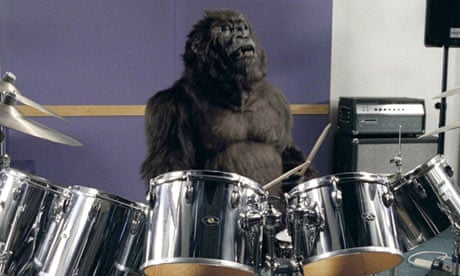The UN's COP 10 biodiversity meeting in Nagoya, Japan, stands on a knife-edge just hours before it closes. But whether we get a deal or not, one interesting shift that's emerged from the sessions can be seen in how we discuss biodiversity.
The "Love, not Loss" message tells us a more effective way of campaigning on biodiversity is to celebrate the natural world we still have rather than to mourn the loss of ecosystems and species. It seems to be gaining traction, especially if this film shown during the sessionsis anything to go by.
We know the message works. Advertisers and marketers have known this for years, forever drawing on awe-inspiring images of the natural world to encourage us to buy stuff. It is effective because it taps into the "biophilia" in us, and works to convey an environmental benefit – real or imagined – of a product. For environmentalists it's a real source of frustration that the imagery of the natural world we fight so hard to protect is commandeered in this way.
Let's take the polar bear as an example. The ursine beasts are fast becoming nature's most successful media-whores. As well as being the pin-ups, or fall-guys, of climate change, polar bears have also been used to flog us sugary pop, fish fingers, holidays in the Canary Islands quite bizarrely, and most recently and perhaps more justifiably, electric cars.
What does the over-exposed polar bear get out of all this? The answer is not a lot. If I take a photo of you and want to use it commercially to promote a particular product or service then I need you to sign a model release form that gives me permission to do so. You can probably see where this is going, but it strikes me that an awful lot of advertisers probably should have been getting a rather large number of species to sign for their image usage rights.
One famous animal in advertising is the Exxon tiger. The oily-types at Exxon used the "tiger in your tank" campaign for decades to promote their business, which now makes profits of around $30bn (£19bn) a year. The annual international cost of saving the persecuted tiger has been estimated at $82m.
To be fair, Exxon have at least donated $15m over the past thirteen years to the Save the Tiger fund. However that is still only 0.003% of their annual profit and some distance from what the 1,750 small- and medium-size businesses signed up with the One Per Cent for the Planet scheme commit to do.
So here's the big idea: Image usage rights for nature. Wildlife photographers and film-makers would be exempt, but every business that wishes to use a plant, animal or even a landscape to promote a commercial product or service would have to obtain the equivalent of a model release form and pay a licence fee to an international agency in order to do so. The scheme could be overseen by the International Union for Conservation of Nature(IUCN) or the UN Convention on Biological Diversity and the funds either put towards the protection of the species or habitat concerned, or focused on threatened biodiversity hotspots.
As the notion of a Universal Declaration of Planetary Rights takes root, the idea of licensed image rights for nature doesn't seem so far-fetched and could raise much needed funds for conservation. The owners of Einstein's image rights recently sued for inappropriate commercial use of his image and I can envisage a similar approach to the marketing use of natural imagery.
This is about nature being properly valued. Not just for utilitarian reasons, as pointed out by the work on The Economics of Ecosystems and Biodiversity (Teeb) report, but also for nature's power and the way that power is used. After all, one of the most famous adverts of recent years by Cadbury, wouldn't have been quite the same without the gorilla, as the International Fund for Animal Welfare have pointed out. For the tigers, the polar bears, the gorillas and all the other natural stars of advertising I think it's payback time.

Comments (…)
Sign in or create your Guardian account to join the discussion